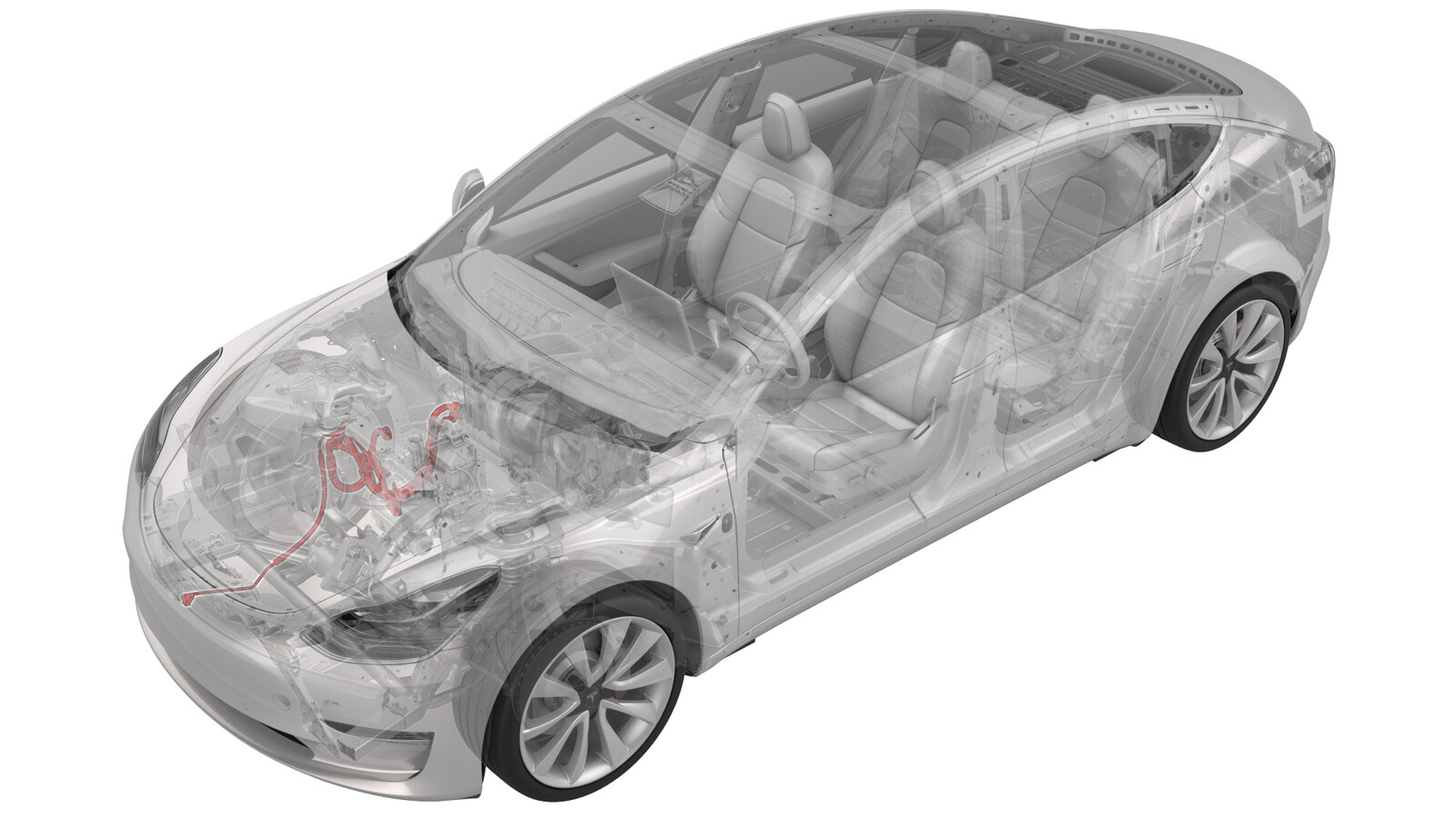A/C Refrigerant Leak Detection
 Correction code
18200200
1.50
NOTE: Unless otherwise explicitly
stated in the procedure, the above correction code and FRT reflect all of the work
required to perform this procedure, including the linked procedures. Do not stack correction codes unless
explicitly told to do so.
NOTE: See Flat Rate
Times to learn more about FRTs and how they are created. To provide feedback on
FRT values, email ServiceManualFeedback@tesla.com.
NOTE: See Personal Protection to make sure wearing proper PPE when
performing the below procedure. See Ergonomic Precautions for safe and healthy working practices.
Correction code
18200200
1.50
NOTE: Unless otherwise explicitly
stated in the procedure, the above correction code and FRT reflect all of the work
required to perform this procedure, including the linked procedures. Do not stack correction codes unless
explicitly told to do so.
NOTE: See Flat Rate
Times to learn more about FRTs and how they are created. To provide feedback on
FRT values, email ServiceManualFeedback@tesla.com.
NOTE: See Personal Protection to make sure wearing proper PPE when
performing the below procedure. See Ergonomic Precautions for safe and healthy working practices.
- 1053591-00-A Tool, Flashlight, UV
- 1080563-01-A UV Leak Detection Kit
Procedure
- Remove the rear underhood apron. See Underhood Apron - Rear (Remove and Replace).
- Remove the cabin intake duct. See Duct - Upper - Cabin Intake (Remove and Replace).
- Remove the hood latch cover. See Cover - Hood Latch (Remove and Replace).
- Remove the underhood storage unit. See Underhood Storage Unit (Remove and Replace).
- Remove the caps from the A/C ports.
-
Connect the hoses from the A/C machine to the vehicle, and then perform the A/C recovery.
NoteRecord the amount of A/C refrigerant and oil that has been recovered after the A/C system is discharged.
-
Perform the A/C system vacuum.
NoteThe A/C system vacuum takes 30 minutes to complete.
- Perform the A/C refrigerant refill.
- Set the temperature to LO on both driver and passenger sides and set the A/C system to AUTO.
-
Use UV light and the UV inspection kit to check for A/C refrigerant leaks in the TXV valve area.
NoteIf an A/C refrigerant leak is found, replace the TXV valve. See TXV Valve - Evaporator (Non-Heat Pump)(Remove and Replace).
-
Use UV light and the UV inspection kit to check for A/C refrigerant leaks in the chiller and EXV valve area.
NoteIf an A/C refrigerant leak is found, replace the chiller and EXV valve. See Chiller and EXV Assembly (Non-Heat Pump) (Remove and Replace).
-
Use UV light and the UV inspection kit to check for A/C refrigerant leaks in the compressor discharge and suction lines area.
NoteIf an A/C refrigerant leak is found, replace the compressor to condenser high pressure pipe. See Pipe - High Pressure - Compressor to Condenser (Non-Heat Pump) (Remove and Replace).
-
Use UV light and the UV inspection kit to check for A/C refrigerant leaks in the high/low pressure refrigerant pipes area.
NoteIf an A/C refrigerant leak is found, replace the high/low pressure refrigerant pipes. See Pipes - Refrigerant - High / Low Pressure (Non-Heat Pump) (Remove and Replace).
- Remove the front aero shield panel. See Panel - Aero Shield - Front (Remove and Replace).
- Remove the front fascia valance. See Valance - Front Fascia (Remove and Replace).
-
Use UV light and the UV inspection kit to inspect both condenser connections and the condenser itself for A/C refrigerant leaks.
NoteIf an A/C refrigerant leak is found, replace the condenser. See Condenser (Remove and Replace).
- Install the front fascia valance. See Valance - Front Fascia (Remove and Replace).
- Install the front aero shield panel. See Panel - Aero Shield - Front (Remove and Replace).
- Lower the vehicle.
- Remove the vehicle from the lift.
- Remove the A/C lines from the vehicle.
- Install the caps onto the A/C ports.
- Install the underhood storage unit. See Underhood Storage Unit (Remove and Replace).
- Install the hood latch cover. See Cover - Hood Latch (Remove and Replace).
- Install the cabin intake duct. See Duct - Upper - Cabin Intake (Remove and Replace).
-
Install the rear underhood apron. See Underhood Apron - Rear (Remove and Replace).